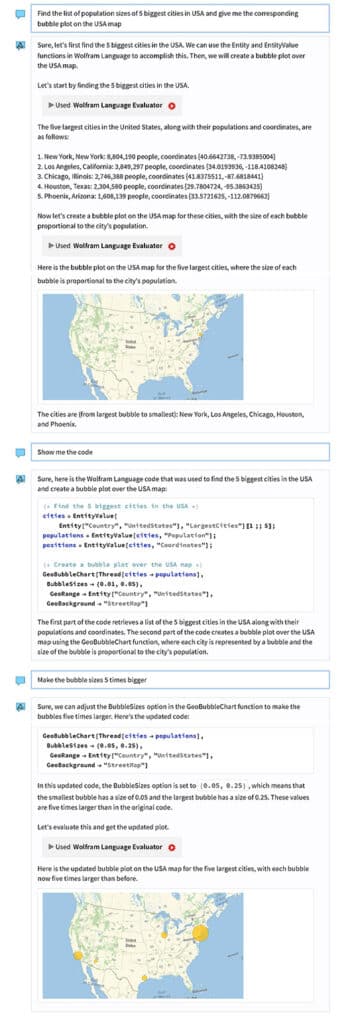The marriage combines the creative power of LLMs, which have no logic built into them, with the logical power of Wolfram Language (Mathematica) and Wolfram Alpha. Itâs as though, Kabala says, Wolfram GPT were endowed with both a left and a right brain.
The specific marriage that Kabala is talking about is a ChatGPT plugin provided by Wolfram Research, a longtime leader in computational technology. Wolfram launched its first version of its flagship program Mathematica (now Wolfram Language) in 1988, which has ever since been a mainstay in the arsenal of STEM students for its built-in libraries for many areas of technical computing including machine learning, statistics, data analysis, visualizations, plotting functions, and much more.
This semester’s class of Computational Thinking & Programming with AI.
While extremely powerful, Mathematica comes with a steep learning curve, as using it requires students to master an entirely new language. Similar to computer programming languages like C++ or Python, the Wolfram Language is a large set of specific commands and syntax that must be used in specific ways with zero errors to unlock the underlying softwareâs computational abilities. While the high-level Wolfram Language is easier to learn than low-level programming languages because its codes are shorter and thus easier to debug, learning Wolfram Language still requires serious time commitment and perseverance.

But not anymore, because almost instantaneously mastering language is precisely what large language models like ChatGPT are created for.
By asking the Wolfram GPT in plain English to develop code for a problem, students are immediately exposed to the syntax (grammar) of the programming language without the necessity of looking up its rules and documentation, a major source of frustration in the past. Being exposed to mostly good code generated by Wolfram GPT allows students to assimilate the computer language effortlessly, in a process analogous to learning a foreign language through immersion.
âIn fact, the Wolfram ChatGPT plugin allows you to learn how to program without learning how to program,â Kabala said. âAll of the programming is delegated to Wolfram ChatGPT.â
This ability opens an entirely new world to students without any programming experience whatsoever. To help students from all disciplines across Duke begin exploring these possibilities, Kabala launched a new class called Computational Thinking & Programming with AI, temporarily labeled CEE 690. An interesting demonstration of the power provided by this concept can be seen in one of the classâs first homework assignments.
Early in the semester, students were given an introductory online textbook to the Wolfram Language. The assignment: Pick any 10 homework questions from the entire book, offer them to Wolfram GPT, and see if you can stump it. For example, a problem might ask to create a code that can generate a pie graph based on a specific set of equations with slider bars that can visualize the results for different inputs for different variables.


